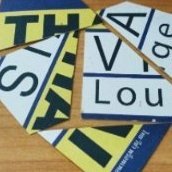Chula scientists develop cardiac tissue from embryonic stem-cells
-
Recently Browsing 0 members
- No registered users viewing this page.
-
Topics
-
-
Popular Contributors
-
-
Latest posts...
-
111
Do you live in a Tourist Ghetto or out in the sticks?
No they don't. Farangs live all over. You know stuff all. -
-
-
111
Do you live in a Tourist Ghetto or out in the sticks?
You are the troll. 35 years pigs bum. Can't name Thai food. -
25
Crime Neighbour Shoots Motorcycle Repairman Over Late-Night Noise in Khon Kaen
So, you came up with gunshot in downtown Bangkok, a city of over 10 million people. Pretty weak brother. Incidentally when my son was in high school, we rented an apartment about 200 meters from the National Stadium BTS station, and it was quiet as well. Bit of road noise from Sukhumvit, but no noise from the neighbors. Also rented two homes in Kabinburi, both quiet as could be. Where did you say you lived again? -
11
Salted to Death on Thai Food - Starved of it on Western...
I am sure you are not over 90 years old. Old age and disabilities go hand in hand. 98% of all people in their 90s who lived in a nursing home had a disability and 81% of people in their 90s who did not live in a nursing home also had one or more disabilities. Many who never thought they would live so long have run out their savings. When you are a young lad of 80, it may be well and good to squeeze out another day so you can worry about squeezing out another. A time comes when you can stop worrying about tomorrow.
-
-
Popular in The Pub





.thumb.jpg.3ee24d9400fb02605ea21bc13b1bf901.jpg)



.thumb.jpeg.d2d19a66404642fd9ff62d6262fd153e.jpeg)


Recommended Posts
Create an account or sign in to comment
You need to be a member in order to leave a comment
Create an account
Sign up for a new account in our community. It's easy!
Register a new accountSign in
Already have an account? Sign in here.
Sign In Now